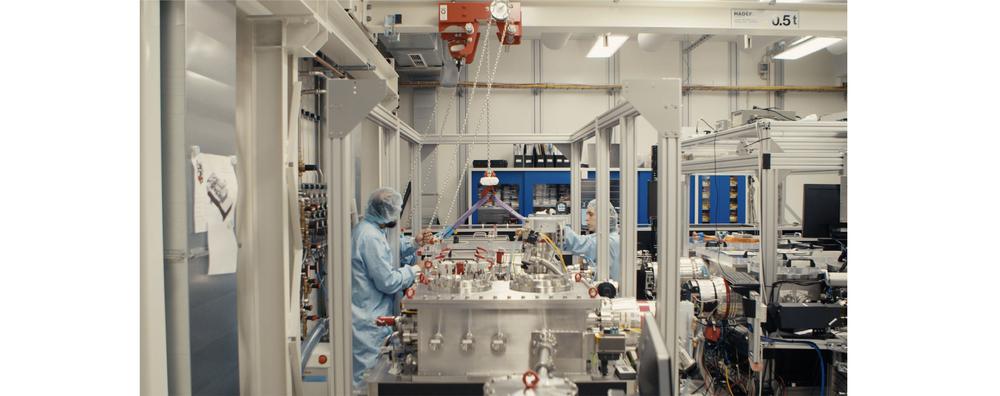Attosecond light sources

Attosecond pulses are produced by focusing infrared laser light onto a gas target with peak intensity around 1014 W/cm2. In this way, high harmonic generation is triggered, giving rise to a train of high-energy-photon bursts. From the train, ultrabroad-band isolated attosecond pulses are produced by employing the polarization gating technique. Such pulses, with a typical duration around 200 as and tunable photon energy between the XUV and the soft-x spectral range, are combined with infrared and UV pulses in cutting-edge pump-probe setups for ultrafast laser spectroscopy. In particular, two attosecond beamlines are operative in our laboratories:
XUV attosecond beamline: Isolated attosecond pulses are generated with photon energies from 15 to around 50 eV, with the specific aim of targeting valence electronic states of biologically relevant molecules. The attosecond pulses can be combined with ultrashort UV pulses (2-fs duration, 210-340 nm bandwidth) and/or with few-cycle near-infrared pulses (5-fs duration, 450-1000 nm bandwidth).
Soft-x attosecond beamline: attosecond pulses are produced with photon energies in the water-window region, i.e., from the carbon K-edge to the oxygen K-edge (from 280 to 530 eV, approximately). The driving laser field consists of few-cycle (~15 fs) infrared pulses at 1.5-um wavelength. Such pulses are generated by a customized optical parametric amplifier. The attosecond pulses can be combined with ultrashort UV pulses (2-fs duration, 210-340 nm bandwidth) and/or with few-cycle infrared pulses (15-fs duration, 1300-1800nm bandwidth). Such a beamline aims at applying attosecond technology for the investigation of ultrafast dynamics in liquids and solids.
More information can be found here.